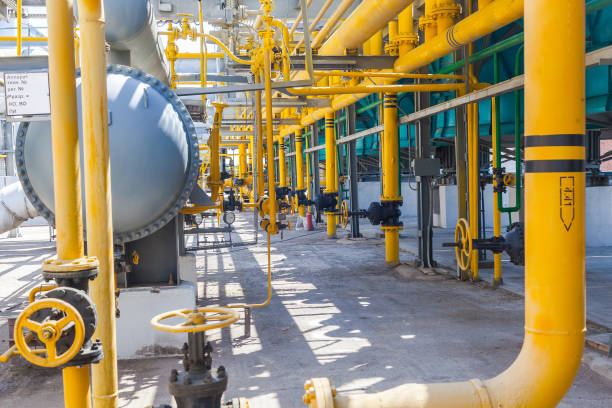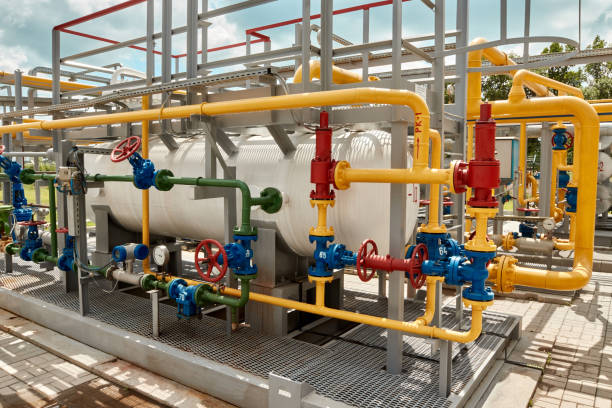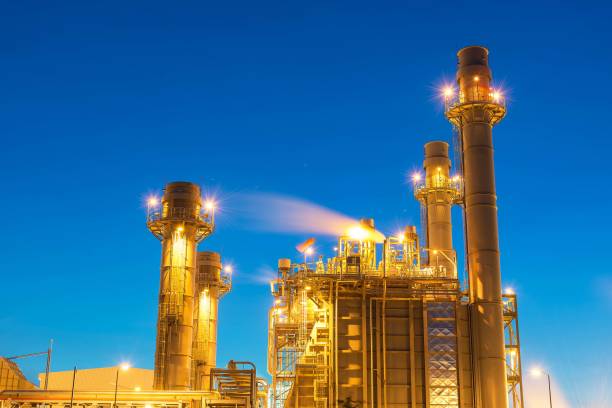Table of Content
- What is Oil and Gas Production?
- How are oil and gas produced?
- Five oil and gas industry trends to watch
- What is the impact on global temperatures?
- What are other consequences of using oil and gas?
- What’s next for the oil and gas industry?
- Key Takeaways
With an anticipated $5 trillion in global revenue for 2022, the oil and gas industry stands as one of the largest and most influential sectors in the world economy. Its impact reverberates across diverse domains, from powering transportation and heating to fueling energy production, industrial output, and manufacturing. As the primary sources of energy globally, oil and natural gas wield significant influence in the energy sector, contributing to the intricate web of the global economy.
The industry's intricate distribution processes and systems are marked by complexity, capital intensity, and a reliance on cutting-edge technology. Considered the biggest sector in the world in terms of dollar value, the oil and gas sector operates as a global powerhouse, employing hundreds of thousands of workers and annually generating hundreds of billions of dollars.
In regions hosting major National Oil Companies (NOCs), these entities play a vital role, often contributing significantly to national GDP. In 2022, the Oil and Gas Industry saw record profits, providing substantial cash flow to underpin its strategies in 2023. While navigating geopolitical and macroeconomic uncertainties, companies in this sector are tasked with securing short-term supply while concurrently transitioning to cleaner energy in the long term.
What is Oil and Gas Production?
Oil and Gas Production is the process of extracting hydrocarbons, primarily crude oil and natural gas, from beneath the Earth's surface for commercial use. This intricate procedure involves various stages, beginning with exploration to identify viable reservoirs. Once a reservoir is located, drilling operations commence to extract the hydrocarbons. Subsequently, the extracted crude oil and natural gas undergo processing and refining to remove impurities and separate valuable components.
The refined products are then transported via pipelines, ships, or other means to end-users, including consumers and industries. This critical industry not only fulfills the global demand for energy but also contributes significantly to national economies. However, oil and gas production faces challenges, including environmental concerns and the imperative to transition towards sustainable energy sources in response to global environmental considerations.
How are Oil and Gas Produced?
Oil and gas production, involving crude oil (petroleum) and fossil gas (methane), stems from fossil fuels formed underground over millions of years from organic remains. Both comprise hydrocarbons—molecules of carbon and hydrogen.
Traditionally, oil and gas extraction employed vertical drilling into underground reservoirs, prevalent since the mid-1800s. However, modern U.S. production relies heavily on unconventional methods due to the extensive tapping of conventional deposits. Horizontal drilling and hydraulic fracturing (fracking) have revolutionized the industry, allowing access to previously unreachable stores. This process involves injecting water, sand, and chemicals into wells, creating fissures in shale rock to release trapped oil and gas—a phenomenon known as the "shale revolution," significantly boosting U.S. production.
Technological advances have also facilitated increased offshore extraction, especially in the Gulf of Mexico, although it constitutes a small fraction of total U.S. production. Following extraction, oil and gas undergo refinement for various purposes. Oil is refined into fuels, jet fuel, and petrochemicals, while natural gas undergoes processing for electricity, heat, and industrial uses, with liquefied natural gas (LNG) enabling transportation via tankers.
Five Oil and Gas Industry Trends to Watch
The oil and gas industry, a cornerstone of the global economy, is undergoing transformative shifts as it navigates environmental, technological, and market dynamics. Keeping a pulse on industry trends is crucial for stakeholders seeking to adapt to changing landscapes. Here are five key trends shaping the oil and gas sector:
1. Upstream
Companies engaged in oil and gas exploration and production are categorized as upstream businesses, commonly referred to as "E&P" for exploration and production. These entities actively search globally for reservoirs of raw materials, employing extensive drilling processes to extract minerals.
The upstream sector is characterized by high risks, substantial investment capital, prolonged durations, and advanced technological requirements. Nearly every aspect of an E&P company's financial statements is directly tied to the extraction of oil and gas. In contrast to E&P firms, drillers, responsible for well servicing activities, do not directly profit from oil and gas production. Instead, they maintain wells over time through processes such as logging, cementing, casing, perforating, fracturing, and general upkeep. This distinction highlights the separation between oil exploration and drilling activities, both integral but distinct components within the broader oil and gas industry.
2. Clean Energy
The clean energy transition in the oil and gas (O&G) sector is gaining momentum with the advent of new policies. Fueled by increased cash flows in 2022, O&G companies are directing investments toward cleaner alternatives.
The supportive policy environment is anticipated to sustain this trend. However, the trajectory of clean energy investment over the next 12 months hinges on various factors. These include evolving policy landscapes, market dynamics, and technological advancements. The industry's responsiveness to these elements will shape the pace and focus of clean energy initiatives, marking a crucial period in the ongoing transformation of the O&G sector.
3. Natural gas and liquified natural gas (LNG)
Anticipated for 2023, increased investments in natural gas signal a pivotal role in the clean energy transition. These investments are poised to focus on reducing the greenhouse gas intensity associated with natural gas and its infrastructure. Notably, the United States is ramping up natural gas production with a dual aim of curbing carbon and methane emissions while meeting growing export demands, particularly in Europe.
The momentum is expected to extend to certified natural gas and carbon-neutral LNG, aligning with global efforts to mitigate environmental impact. The confluence of policy initiatives and strategic investments positions natural gas as a crucial player in advancing cleaner and more sustainable energy solutions in the coming year.
4. Midstream
Midstream operations encompass the crucial stages of transporting, storing, and processing oil and gas. After the extraction of resources, the challenge arises of transporting them to refineries, which may be located in entirely different geographic regions from the extraction sites. The transportation methods employed range from tanker ships to extensive pipeline networks and trucking fleets.
The midstream sector plays a pivotal role in facilitating the seamless movement of raw materials from extraction points to refineries, contributing to the overall efficiency and functionality of the oil and gas supply chain. Characterized by stringent regulations, particularly in pipeline transmission, the midstream sector carries low capital risk. Its performance is inherently tied to upstream activities, as the efficient movement of raw materials is crucial for downstream processes in refining. Overall, midstream operations form a critical link in the oil and gas supply chain.
5. Downstream
Downstream operations involve the processing of raw materials acquired during the upstream phase, encompassing the refining of crude oil and purification of natural gas. Subsequently, these processed products are marketed and commercially distributed to end users in various forms, including but not limited to natural gas, diesel oil, petrol, gasoline, lubricants, kerosene, jet fuel, asphalt, heating oil, and LPG (liquefied petroleum gas).
Additionally, downstream activities encompass the production and distribution of various petrochemicals, reflecting the diverse range of refined products derived from the initial raw materials obtained in the upstream sector. In the upcoming year, refineries may face challenges related to declining demand, concerns about a potential economic recession, and an anticipated global increase in refining capacity by 1.6 million barrels per day (mbpd).
In particular, refiners based in the United States are projected to prioritize financial stability over expanding core refining capacity. Their Strategic Focus includes operational optimization and the conversion of refineries to facilitate the production of renewable fuels, reflecting a commitment to both economic resilience and sustainable energy practices.
6. Mergers and Acquisitions
Mergers and acquisitions (M&A) in the oil and gas sector are poised to be influenced by broader market trends. Despite anticipated record cash flows and a resurgence of interest in resource industries, the M&A landscape in 2023 is expected to be tempered by capital discipline and an uncertain economic environment. The cautious approach stems from the need to balance the potential benefits of Strategic Deals with economic uncertainties.
Notably, a survey reveals that 27% of executives emphasise the significance of high and stable energy prices as a key factor sustaining M&A momentum in 2023. This underscores the industry's sensitivity to energy market conditions as a crucial determinant of merger and acquisition activities.
What is the impact on global temperatures?

The production and combustion of oil and gas contribute significantly to global greenhouse gas emissions, responsible for almost half of the world's emissions, primarily carbon dioxide and methane. These emissions intensify the greenhouse effect, leading to rising temperatures, more severe storms, heat waves, droughts, floods, and other environmental disasters.
The United States, historically the largest emitter and currently the second-largest behind China, sees nearly 80% of its carbon dioxide emissions and over a quarter of methane emissions originating from oil and gas activities. To meet the Paris Agreement's goal of limiting global warming to 1.5°C above preindustrial levels by 2030, emissions must decrease by 45%.
The Biden administration has committed to halving U.S. emissions by 2030 and achieving net-zero emissions by 2050. However, achieving these targets requires immediate emissions reductions, particularly in the oil and gas industry, electricity providers, and automotive sectors. Princeton University's Net-Zero America study suggests a need for a 56% reduction in oil and gas consumption by 2050 compared to 2020 levels. Strategies include enhancing energy efficiency, methane leak detection, adopting carbon capture and storage technology, investing in renewables, and ultimately reducing reliance on hydrocarbons. These measures are critical for addressing irreversible damage and working towards a more sustainable and climate-friendly future.
What are the other consequences of using oil and gas?

The use of Oil and Gas, particularly through burning, has far-reaching consequences on a global and domestic scale. The combustion of these fossil fuels is a major contributor to climate change, leading to the displacement of millions of people, causing numerous deaths worldwide annually, and exacerbating the spread of diseases while compromising food security. The economic toll is staggering, with a projected cost of $178 trillion over the next fifty years if no climate action is taken, according to a 2022 report by Deloitte.
On a domestic level, the oil and gas industry is a significant source of air pollution in the United States, impacting the health of both workers and the estimated seventeen million Americans residing near production sites. Studies reveal a higher likelihood of health issues such as asthma and cancer among these populations, with many production sites situated near Indigenous or minority communities. The environmental impact extends to waterways and oceans, with hundreds of thousands of gallons of oil spilled annually, causing harm to plants, animals, and ecosystems.
Spills occur through various means, including collisions and explosions, as seen in incidents like the Exxon Valdez tanker collision in 1989 and the BP Deepwater Horizon drilling platform explosion in 2010. Additionally, fracking, a method employed in extracting oil and gas, poses risks of water resource contamination and is linked to induced earthquakes. These multifaceted consequences underscore the urgent need for a transition to cleaner and more sustainable energy sources to mitigate the severe environmental, health, and economic impacts associated with the use of oil and gas.
What’s next for the oil and gas industry?

The future of the oil and gas industry is marked by a confluence of challenges and opportunities, shaped by factors ranging from geopolitical shifts and economic considerations to climate change imperatives and technological advancements. The Energy Information Administration (EIA) anticipates a sustained high level of oil and gas production in the United States through 2050. However, this forecast stands in contrast to urgent calls from climate scientists and international agreements advocating for a swift transition to renewable energy sources. Political challenges loom large, with disagreements among lawmakers on the urgency and scope of climate action.
While there is a growing consensus on climate change being a scientific reality, political divides persist, with some arguing that aggressive climate policies could adversely affect the economy and global competitiveness. The influence of oil and gas companies, historically opposed to climate-related regulations, adds complexity to the political landscape, as the industry faces increased scrutiny and legal challenges over alleged climate misinformation. Global events, such as Russia's invasion, have also impacted the industry, prompting responses from the Biden administration to expand refining capacity and consider measures like a gas-tax holiday.
Additionally, efforts to increase liquefied natural gas (LNG) exports to Europe and the construction of new infrastructure raise concerns about potentially locking in greenhouse gas emissions for decades. Despite these challenges, the energy transition remains a focal point, driven by the imperative to address climate change. The industry's future hinges on navigating the delicate balance between meeting energy demands, ensuring economic stability, and aligning with environmental sustainability goals.
The trajectory will likely be influenced by advancements in renewable energy technologies, increasing pressure from stakeholders for corporate responsibility, and the imperative for governments to play a more assertive role in steering the transition. As the industry evolves, collaboration between government, industry, and environmental advocates becomes crucial. Striking a balance that addresses energy security concerns while mitigating climate change impacts requires a nuanced and collaborative approach. The next chapter for the oil and gas industry will unfold against this backdrop of complexity, where strategic decisions and policies will shape its role in a transitioning energy landscape.
Key Takeaways
- The oil and gas industry, with an anticipated $5 trillion in global revenue for 2022, is a major economic powerhouse, contributing significantly to the world economy.
- The industry's operations have a profound impact globally, influencing diverse sectors such as transportation, energy production, industrial output, and manufacturing.
- Despite economic prowess, the industry faces challenges related to environmental consequences, climate change, and the imperative for a transition to cleaner energy sources.
- Oil and gas production contribute substantially to global greenhouse gas emissions, exacerbating climate change and leading to severe environmental and health consequences.
- The industry is navigating a transition phase, marked by increasing investments in clean energy, policy shifts, and a growing emphasis on sustainability and corporate responsibility.
- Political challenges, historical opposition from the industry, and legal scrutiny over climate-related issues add complexity to the industry's trajectory.
- The future requires collaborative efforts between government, industry, and environmental advocates to strike a balance between energy security, economic stability, and environmental sustainability.
- Advancements in renewable technologies and a heightened focus on sustainable practices signal a transformative period for the industry, influencing its role in a transitioning energy landscape.









